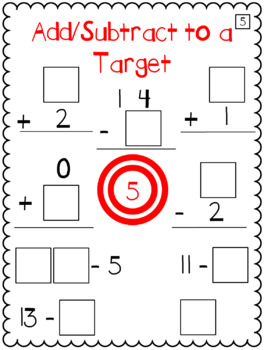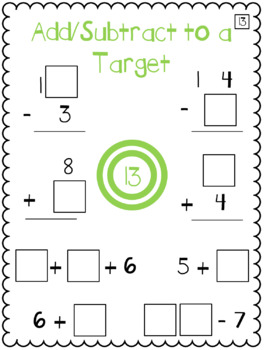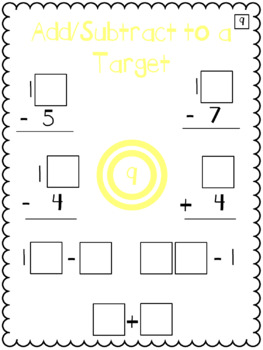Math 0-9 Tiles - Mixed Add/Subtract to a Target
Angela Langendorfer
6 Followers
Grade Levels
1st - 4th
Subjects
Resource Type
Standards
CCSS1.OA.A.1
CCSS1.OA.B.3
CCSS1.OA.B.4
CCSS1.OA.C.5
CCSS1.OA.C.6
Formats Included
- PDF
Pages
47 pages
Angela Langendorfer
6 Followers
Description
Math 0-9 Tiles - Mixed Add/Subtract to a Target is a hands-on math activity that reinforces addition and subtraction facts to 20. The objective is to place each of the 0-9 tiles in the empty boxes on the worksheet using each number only once. This encourages students to practice their math facts all while having fun and problem solving! Included are 20 cards with mixed addition and subtraction problems to a target number, available in color and in black white, as well as an answer key, tracking sheet, and a variety of number tiles to use while playing.
Total Pages
47 pages
Answer Key
Included
Teaching Duration
Lifelong tool
Report this resource to TPT
Reported resources will be reviewed by our team. Report this resource to let us know if this resource violates TPT’s content guidelines.
Standards
to see state-specific standards (only available in the US).
CCSS1.OA.A.1
Use addition and subtraction within 20 to solve word problems involving situations of adding to, taking from, putting together, taking apart, and comparing, with unknowns in all positions, e.g., by using objects, drawings, and equations with a symbol for the unknown number to represent the problem.
CCSS1.OA.B.3
Apply properties of operations as strategies to add and subtract. If 8 + 3 = 11 is known, then 3 + 8 = 11 is also known. (Commutative property of addition.) To add 2 + 6 + 4, the second two numbers can be added to make a ten, so 2 + 6 + 4 = 2 + 10 = 12. (Associative property of addition.)
CCSS1.OA.B.4
Understand subtraction as an unknown-addend problem. For example, subtract 10 – 8 by finding the number that makes 10 when added to 8.
CCSS1.OA.C.5
Relate counting to addition and subtraction (e.g., by counting on 2 to add 2).
CCSS1.OA.C.6
Add and subtract within 20, demonstrating fluency for addition and subtraction within 10. Use strategies such as counting on; making ten (e.g., 8 + 6 = 8 + 2 + 4 = 10 + 4 = 14); decomposing a number leading to a ten (e.g., 13 - 4 = 13 - 3 - 1 = 10 - 1 = 9); using the relationship between addition and subtraction (e.g., knowing that 8 + 4 = 12, one knows 12 - 8 = 4); and creating equivalent but easier or known sums (e.g., adding 6 + 7 by creating the known equivalent 6 + 6 + 1 = 12 + 1 = 13).





